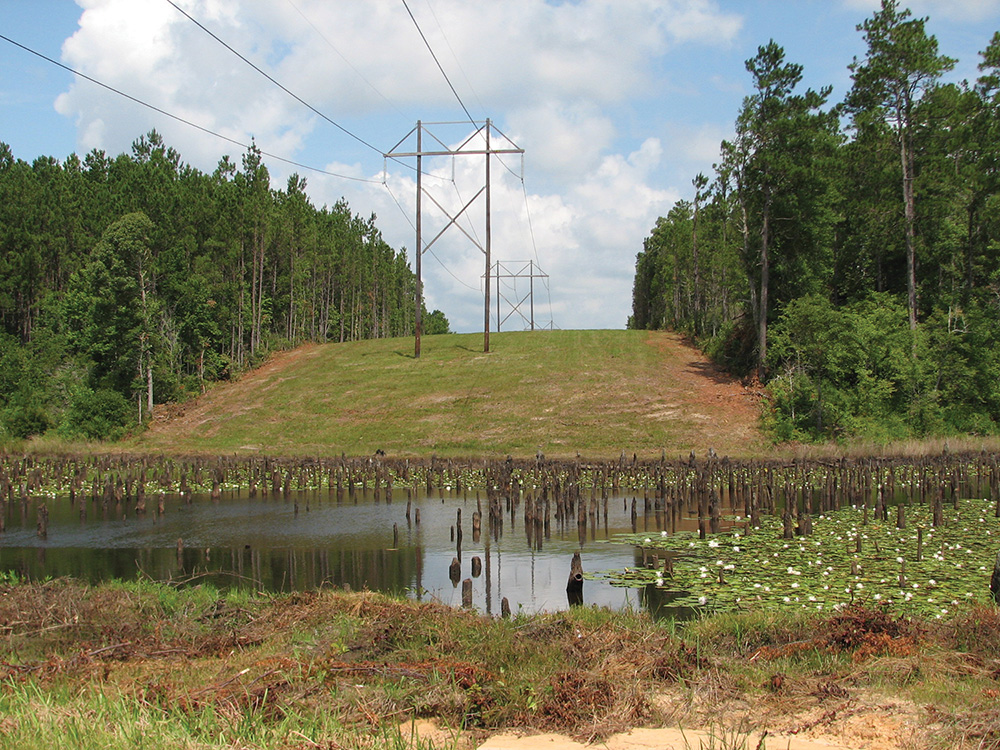
Source: Cooperative Energy
By Derrill E. Holly
In Mississippi, it’s a tortoise. In New England, it’s a hare. Those are just two species symbolizing the successes electric cooperatives are achieving with vegetation management strategies designed to reduce right-of-way maintenance costs while improving wildlife habitat.
“Instead of 12 feet of open space immediately under our poles, we have opened up our entire 100 feet of right of way,” said Wesley Graham, a transmission field biologist at Cooperative Energy.
The Hattiesburg, Mississippi-based generation and transmission (G&T) cooperative used the catastrophic system damage caused by Hurricane Katrina in 2005 to completely rethink its approach to right-of-way management, and the results are paying off.
“In five years, we’ve seen evidence that gopher tortoises are nesting or moving boundary-to-boundary,” said Graham. He has collected reams of data on nest activity indicating an increase in population for the species which remains on the U.S. Fish and Wildlife Service’s endangered species list.
Before Katrina ripped down much of the co-op’s transmission system, vegetation management meant mowing the entire 1,800 miles of transmission corridors on a four-year rotation and side trimming boundary vegetation over a 15 to 20-year cycle.
Graham now uses herbicides specifically formulated to control woody vegetation within the 100-foot-wide utility easements. Crews walking the right of way are able to treat half the system within an annual control cycle.
“There’s evidence that the change has increased populations of quail, wild turkey, white-tailed deer and squirrels,” said Graham. “It’s a win for the co-op, it’s a win for the landowners and it’s a win for the environment.”
Like many electric cooperatives, Cooperative Energy is reducing its reliance upon pruning, cutting and mowing as primary methods of right-of-way vegetation management, and turning to resource management techniques to save money and energy.
Many G&Ts are working with the U.S. Forest Service, the U.S. Fish and Wildlife Service, state natural resources and environmental agencies. Cooperative Energy’s current vegetation management plan was also reviewed by environmental interest groups like the National Wild Turkey Federation.
“We’ve worked to develop a program that’s beneficial to all involved, and that includes wildlife,” said Graham. “We’re trying to create ecosystems that support biologic diversity.”
Instead of using turf grasses, like Bermuda or Bahia, Cooperative Energy has stripped away invasive or overly dominant vegetation, enabling native grasses to recover, said Graham.
Graham and other G&T vegetation management experts now suggest that transmission right of way be viewed as natural corridors for wildlife because many easements have been in place for more than 50 years. Effective management can help make them ecological assets.
Starting small for big benefits
“Utility easements create opportunities to establish or expand habitat,” said Mace Vaughan, co-director of pollinator conservation and agricultural biodiversity for the Xerces Society for Invertebrate Conservation in Portland, Oregon. “When you bring wildflower and plant diversity into those areas, you can make them more productive.” That means healthy new growth can be “feathered in,” featuring shorter or slower growing trees and other plants, protecting more mature forests from high winds that might topple trees into rights of way.
“No one wants trees growing up into or falling onto power lines, so we’re offering solutions that can help promote and maintain diverse ecosystems,” said Vaughan. “Encouraging growth of smaller stature shrubs helps create sunny, open meadows that support pollinators and other wildlife.”
Foresters and botanists have identified varieties of slow-growing or medium-height mature trees, flowering or fruiting shrubs, forbs, grasses and wildflowers suitable for naturalized landscaping.
When they are established along or near a utility transmission right of way, they can offer a welcoming stop for insects and animals moving along easement edges between parkland and larger, undeveloped areas.
Helping Mother Nature
Small populations of the New England cottontail, sometimes called the gray hare, have been identified from eastern New York to southeastern Maine. The Natural Resource Conservation Service (NRCS) is involved in a three-year conservation plan for the species on behalf of USDA’s Working Lands for Wildlife Program. Several utilities in the region are supporting the project in northeastern New York and six nearby states.
A major utility transmission corridor in Maine has been planted with shrubby habitat that could attract rabbits and there is evidence they are moving along the right of way and establishing new active colonies.
The challenge is finding ways to mimic nature, while controlling growth to occupy available space. Wildlife friendly habitats can be compatible with most urban and suburban homes, leaving ample room for outdoor recreation and entertaining.ν
Derrill Holly writes on cooperative issues for the National Rural Electric Cooperative Association, the Arlington, Va.-based service arm of the nation’s 900-plus consumer-owned, not-for-profit electric cooperatives.





